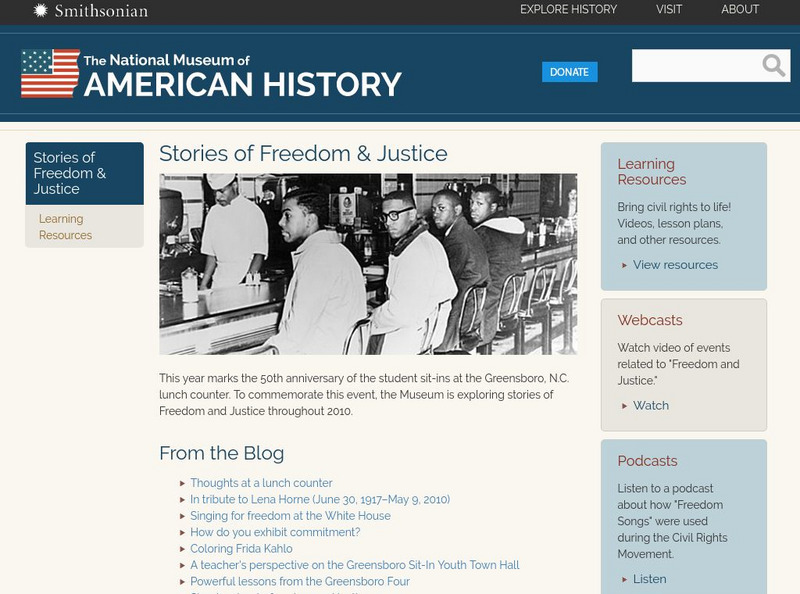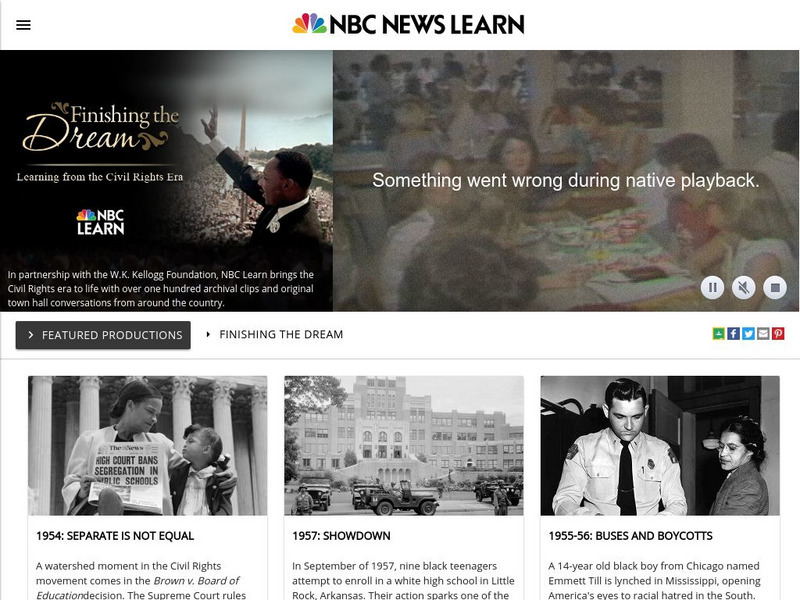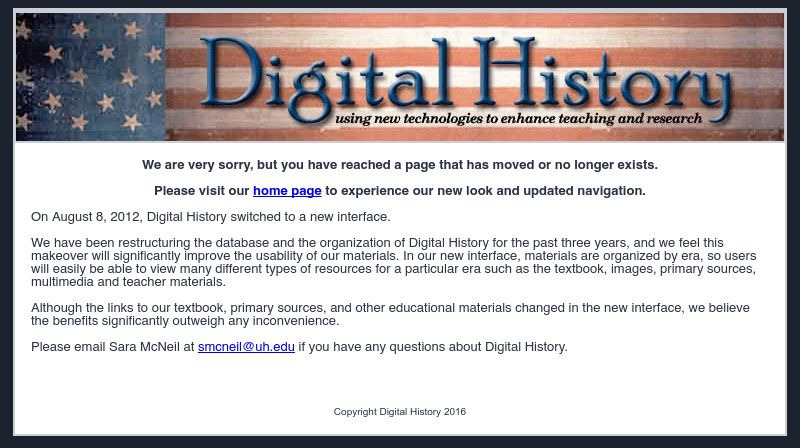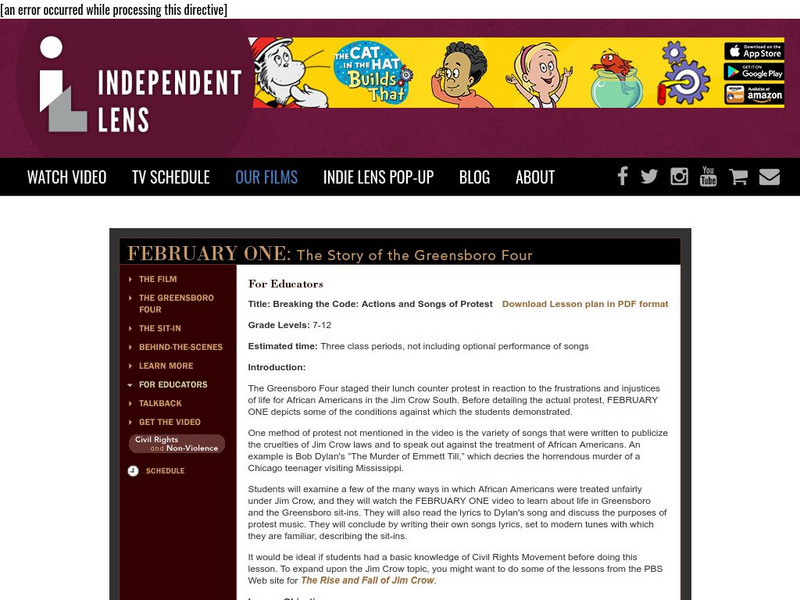University of Virginia
Virginia Center for Digital History: Television News of the Civil Rights Era
A rich collection of streaming video samples of television news footage from 1950 to 1970, along with an assortment of primary source documents, first-person accounts, a glossary of terms, and essays and analysis for learning about the...
Other
Civil Rights Movement Veterans: Rock Hill and Charlotte Sit Ins
Timeline is provided from May, 1954 when the Supreme Court rules "separate but equal" is unconstitutional to 1982 when Friendship College closes it doors. Brief entries for each important date of the sit-in movement, including the Rock...
PBS
The March on Washington and Its Impact : Lesson Plan
Learn about the social conditions in the United States that led up to the Civil Rights Movement. Also, explore peaceful resistance and the immediate impact of the march.
PBS
Pbs: American Experience: Freedom Riders
PBS collects and summarizes the stories of the freedom riders, who, in 1961, challenged segregation in the American South. Includes video clips from the documentary, interactive timeline of key locations and events, biographical...
Smithsonian Institution
National Museum of American History: Stories of Freedom and Justice
To celebrate the 50th anniversary of the student sit-ins at the Greensboro, NC. lunch counter, the NAMH has produced this excellent collection of resources centered on the theme of freedom and justice. Experience this important part of...
NBC
Nbc Learn: Finishing the Dream
A collection of over one hundred archival video clips highlighting significant events in the history of the Civil Rights Movement since the Brown v. Board of Education Supreme Court decision in 1954. There are ten collections covering...
PBS
Pbs Learning Media: March on Washington Flyers
These 1963 flyers announce the speakers and issues for the March on Washington; from the Birmingham Civil Rights Institute.
National Humanities Center
National Humanities Center: Toolbox Library: Marching, Making of African American Identity: V. 3
This resource by the National Humanities Center discusses the role of physical protest in the civil rights movement. Its primary focus, the print "Freedom Now," by Reginald Gammon (1921-2005), depicts the massing of bodies in the name of...
Digital History
Digital History: Freedom Now
When four African American North Carolina Agricultural and Technical College students refused to leave the lunch-counter at the F.W. Woolworth store in Greensboro they started the first non-violent, "sit-in" movement. Although the...
Smithsonian Institution
National Museum of American History: Students "Sit" for Civil Rights
Read the book, "Freedom on the Menu" about the Greensboro Sit-Ins and use the background information and follow up activities provided to enhance the story.
Stanford University
Stanford University: Lesson Plan on the Children's Crusade
A well designed four part lesson plan that examines the use of children in the civil rights demonstration that occurred in Birmingham under the leadership of Dr. King.
Digital History
Digital History: Birmingham, Alabama: Bombingham
The city that best exemplifies white resistance to integration and the tension and conflict of the civil rights movement is Birmingham, Alabama. Learn about events of and reactions to the civil rights movement of the early 1960s in...
Digital History
Digital History: The March on Washington
In August 1963, more than 200,000 people marched from the Washington Memorial to the Lincoln Memorial for civil rights. Read about that day in this brief article.
PBS
Pbs Teachers: February One (Lessons on the Greensboro Sit in of 1960)
Find two lesson plans developed for a PBS documentary about the Greensboro Four, whose sit-in at a whites-only Woolworth's lunch counter was a key event in the unfolding history of the civil rights movement. The lessons ask learners to...
PBS
Pbs Teachers: 1963 March on Washington and Its Impact (Lesson Plan)
A lesson plan that examines the events and conditions that led to the 1963 March on Washington and the impact of the march on civil rights in the United States. Students learn about the concept of "separate but equal" and the philosophy...
Other
Historical Marker Database: Mc Crory's Civil Rights Sit Ins Friendship Nine
Historical sign marks the building where the Friendship Nine refused to leave the McCrory's lunch counter. Short history is provided along with related websites. This group was the first to refuse bail and thus began the Jail No Bail...
Curated OER
Loc: For Teachers: From Slavery to Civil Rights: March for Civil Rights
Martin Luther King, Jr., addressing civil rights demonstrators.















